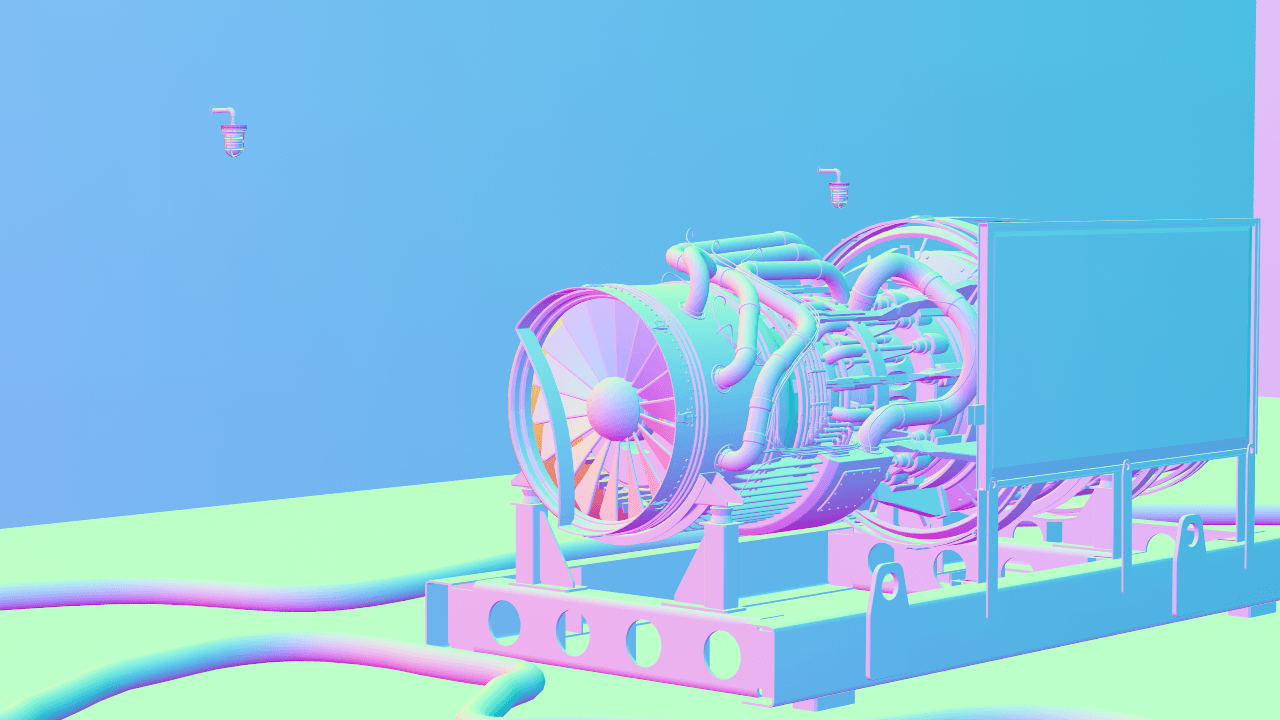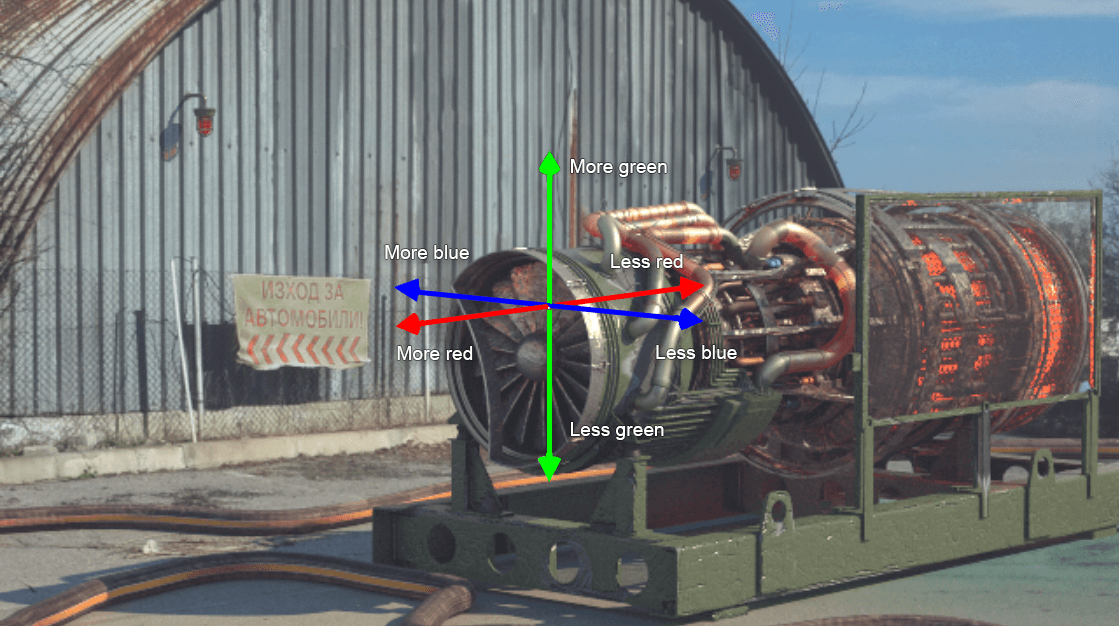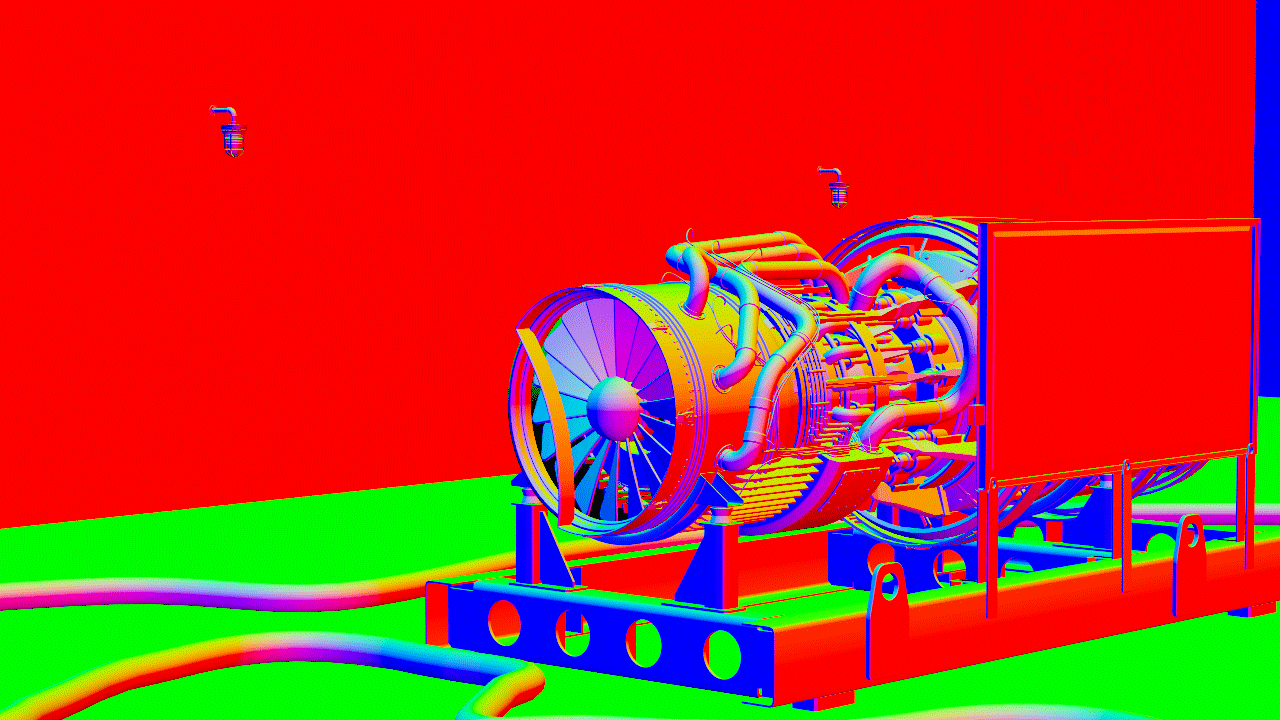This page provides information on the Normals Render Element which creates a normals image from surface normals in the scene.
Page Contents
Overview
The Normals render element stores the camera space normal map using the geometry's surface normals. The Normals Render Element is useful for adjusting lighting in the composite. For example, the red, green and blue channels can be adjusted in compositing software.
Bump maps are not represented in this render element; to include bump maps, use the Bump Normals Render Element.
UI Path: ||Toolbar|| > V-Ray Menu icon > Render > VRayRenderElement > Type: Normals
Properties
Filtering – Applies the image filter to this channel. Image filter settings are in the Image Sampler tab in the VRayRenderer properties.
Normals Color Generation
The Normals Render Element uses screen space to determine the colors in the render element. With screen space in the camera view:
The X axis runs left-right perpendicular to the camera viewing angle. This is represented in the Red channel of the Normals render element with 1 being left-facing geometry and 0 being right-facing geometry.
The Y runs up-down perpendicular to the viewing angle. This is represented in the Green channel of the Normals render element with 1 being up-facing geometry and 0 being down-facing geometry.
The Z runs forward-back to the viewing angle. This is represented in the Blue channel of the Normals render element with 1 being forward-facing geometry and 0 being back-facing geometry.
Screen space XYZ coordinate system relationship to camera and RGB colors
Full Normals Render Element
World Normals Render
While the Normals render element stores the camera space normal map using the geometry's surface normals, it is possible to output world space normals as well using a slightly different workflow. A V-Ray ExtraTex Render Element is connected to the scene node, and a VRaySamplerInfo node is connected to the VRayExtraTex node. The VRaySamplerInfo node Output is then set to normal. This will then output world space normals.
The values for the VRaySamplerInfo node are set within the VRaySamplerInfo node and not the ExtraTex Render Element. It can be good workflow practice to ensure each ExtraTex Render Element is named according to the pass it contains. See the VRaySamplerInfo page for more details on what other passes it can produce in this way.
World Normals renders all visible objects in the scene with a color ramp based on the world space X, Y, and Z coordinates of their polygonal normal, and represents the actual 3D coordinate in space. These can be both positive and negative, so a floating point image format should always be used when saving this output.




